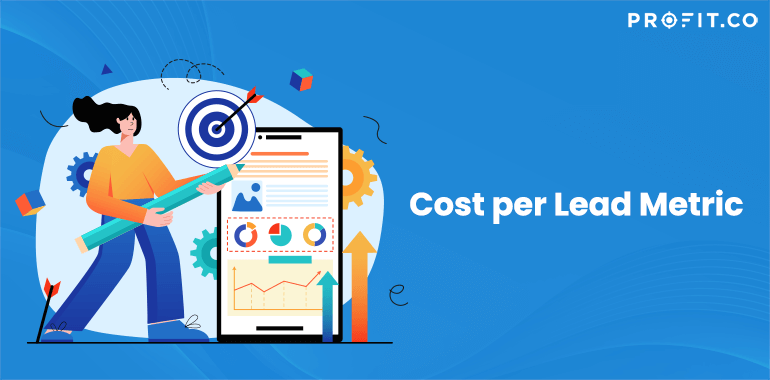The cost per lead is an essential metric for several reasons. A marketing campaign is only profitable when it reaches its target – right? And the safest way in which you can ensure that it has actually reached its target is by analyzing the results it generated. This is where the cost per land metric comes in. This metric investigates whether a marketing campaign has been cost-efficient, in the sense of generating new leads.
To exemplify, a lead is usually represented by a person who has been interested in your product or service and, as a result, completed a goal. Therefore, this metric is interlinked with other metrics, such as the cost to acquire new clients. Your marketing team will find this metric useful as it points tangible numbers concerning how much money your business ought to spend on acquiring new leads. That is not all, though. The cost per lead metric is just as significant in relation to the return on investment calculation. In truth, every individual stage of the purchase funnel ought to have similar metrics linked with it; just to name a few, the cost per win, or the cost per visitor, so on and so forth. Correspondingly, you can use these metrics for tracking individual campaigns such as banner ads, AdWords, social ads, or the total of your marketing efforts. What Else Should You Know?The formula for calculating this widely used metric isn’t complicated. Quite the contrary; the cost per lead = the total costs of generating leads/ the total amount of leads acquired. Now, it’s entirely up to you how you choose to utilize this valuable information for your business’ growth.
We’ll take an example. Supposing that a firm has spent $1,000 on a specific pay-per-click campaign; this resulted in 10 users. That would mean that the cost per lead is = $1,000/10 = $100.
What you should do next is establish whether this is a decent sum of money for the price of your product or service. It goes without saying that $100 has a distinct value for a company that sells luxury goods, for instance, in comparison to a company that sells toys. To that end, it’s fundamental to adjust your campaigns accordingly.
As for the benchmarks for this metric, it is crystal clear that they vary by industries. Hence, doing research and checking other firms’ performances in this respect might be a good starting point.
In a nutshell, it is crystal clear that your absolute goal should be to diminish the cost per lead as much as possible. A low cost per lead will merely point that your campaigns are profitable and well-strategized. On the other hand, though, considering that your cost per lead is high, especially after comparing it to the benchmarks in your given industry, then, you should consider changing your approach. This would simply mean that your campaigns consume a lot of money without generating enough profit.



